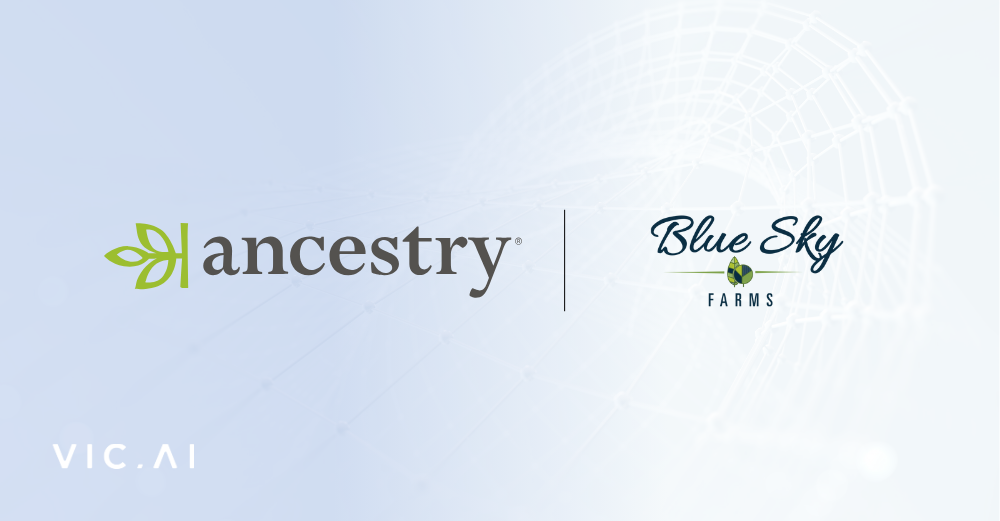Do you recall a time when you had to go to the box office every time you wanted to buy a concert ticket? Camping out for Queen, the Beatles or other popular bands was a must if you didn’t want nosebleed seats.
What about when you had to wait in line for hours in the hot sticky gym to register for college courses, just to find out your top choices were already full? You might have even had nightmares about failing to sign up for the classes you needed to graduate.
Key takeaways:
- Accounting AI can offer more implementation scalability for global organizations
- How to give to make your accounts payable pros happier with the gift of time
- Measuring performance with real time insights allow teams to enhance processes faster
Thankfully these long, miserable waits have decreased tremendously with online class registration and ticket buying. Today, with the help of automation, you can purchase a concert ticket online, then it’s automatically added to the Ticketmaster App on your phone, plus the event is automatically added to your Google calendar. No need to print a ticket or get angry at your spouse for leaving the tickets on the kitchen counter at home.
What if your company bought box seats to entertain clients at a concert or game? Before computers, these entertainment expenses were all processed manually with receipts or invoices piling into filing cabinets once approved and posted to the general ledger. The invoice processing workflow could take weeks or even months with heavy manual work for the accounts payable department. There was also a need for filing and organizing documents in a filing cabinet and extra office space to house those documents.
How different is your accounts payable workflow from this pre-computer example?
If your finance department is still predominantly paper-based, you rely heavily on templates and spreadsheets, or your computerized system lacks efficiency, you have a gigantic opportunity to revolutionize your accounts payable department and lower overall AP processing costs.
If you’ve already implemented digital tools or automation, great job! You are already on your way to suffering less from AP headaches. But, of course there is a but...you still have an opportunity to push your efficiency and cost saving goals even further.
No matter what stage of digitization you’re in, AI can help
There are nuances between every companies’ accounting system, but there are common ways to implement enhancements to the accounts payable workflow. According to Levvel, these are the three distinctions between AP technologies:
- AP management tools included in an existing instance of ERP/accounting software
- Tools developed by internal technology resources, either standalone or as a plug-in to existing ERP/accounting software (a homegrown solution)
- Third-party, cloud-based plug-in automation tools
Though ERP-based AP software is the most widely used tool by finance departments, this type of software is difficult to update and leaves users wanting a “more automated” solution.
Homegrown tools also struggle to keep up with the needs of constantly changing businesses and can be a financial drain to being consistently updated.
Due to the shortcomings of ERP based and internally developed AP workflow enhancement technologies, we’re going to focus on cloud-based solutions that leverage artificial intelligence and machine learning. These accounts payable technologies are dynamic, affordable, and flexible, offering the most modern option to bring your accounting department into the 21st century and beyond.
Here are 10 benefits of autonomous accounting AI software:
1. Faster invoice processing
Processing invoices is often labor and time intensive for AP professionals due to manually scanning and keying in information, then chasing down approvers to finally post it to the general ledger once it’s approved. Accounting AI can take over the tedious, manual work with digital ingestion and less guesswork, which increases the speed of processing from 10 minutes to 2 minutes per invoice.
2. Higher accuracy and error reduction
Are you constantly having to fix financial errors in your reporting? Inaccurate financial data can waste your teams’ precious time -- up to 114 days, according to Blackline’s global survey of C-suite executives and financial professionals. That’s more than one-third of the full calendar year your finance team may be spending identifying errors and making adjustments. Human error is often the culprit of these detrimental mistakes.
Accounting Ai can take the guesswork out of processing thousands of documents with 97-99% accuracy. How accurate are humans after keying in the data for, 50th invoice of the day? 24-hour training makes the solution smarter with time without rules or templates, setup or configuration costs.
As a result of implementing Vic.ai, Ignite Spot Accounting Services has enjoyed a substantial reduction in manual time spent when processing clients’ AP. For example, to solve a recurring headache for Ignite Spot Accounting Services Vic.ai is able to extract and accurately code invoices with 250+ line items to different cost accounts and dimensions in a matter of minutes as opposed to the hours that were previously required -- all without manual data entry or remembering any coding, at superhuman accuracy.
3. Global scalability
These thoughts might be running through your head:
- “My ERP system has offered accounting Ai and I was sorely disappointed”
- “Ai products are not mature enough to solve my day-to-day issues.”
- “Our finance team has tried robotic process automation, and implementing it across our global organization has not been scalable”
As artificial intelligence and machine learning technologies have rapidly improved, they are now able to work together to elevate outdated automation workflows that require tedious human tasks to maintain. Artificial Intelligence can perform cost-side accounting autonomously by learning from your data and your accounting team, gradually taking over the wheel and replacing legacy OCR and rules-based methods. This type of software is designed to work across one or multiple ERP systems and can help your finance department strive for process agility at scale, across large organizations.
See it for yourself. HSB is one of the largest real estate companies in the Nordic Region. With 1.5M invoices to process each year and 300 accountants, their existing scanning technology for accounts payable (AP) and straight-through processing meant employees had to manually code and classify every single invoice.
After implementing accounting Ai, they were able to shorten their average invoice processing time from 3+ minutes/invoice to 30 seconds/invoice.
“We are on track to save more than 25,000 hours per year by automating manual invoice processing once Vic.ai is implemented in all our regions,” said Fredrik Wiktor, Application Management Lead, HSB Affärsstöd.

4. Happier accounts payable pros
When asked why they want to implement AP innovations, 69.8 percent of surveyed AP professionals say they want to reduce the time required to process invoices and 67.6 percent note interest in reducing manual processes.
AI is an optimal way to address many job satisfaction challenges that most of your team members are experiencing. AI primarily encourages you to be more productive—an AI accountant can work alongside people in the accounting process and autonomously complete 95% of the accounts payable tasks like manual data coding (as I already mentioned).
But AI also combats boredom, which can lead to turnover! AI helps accountants stay focused by handling the more menial tasks and eliminating the need to multitask. At the end of the day, it makes your workflow more efficient.
5. Ditch approval matrices in Excel
Does your finance department use a complex excel sheet to manage your invoice approval process? Do emails with invoices get lost in certain approvers’ inboxes? We don’t have to name any names, but there is surely a person (or multiple) you’ve had to chase down for approvals.
Autonomous approval flows can help you convert your approval matrix to a few simple approval flows. This automated accounting feature can intelligently select invoices and expenses that meet a certain confidence level and automates them so that they immediately get sent to the approvers without requiring any data entry or classification review by a human beforehand. This includes everything from vendor identification to cost and dimensional classifications on a line item level.
As an on-demand accounting service, with multiple approvers for each company, Countsy knows first hand how difficult approvals can be for multiple clients.
“The beauty of a feature like Autopilot is that it eliminates time spent manually reviewing invoices, but still has flexibility built-in for us to do a final check of invoices that exceed a certain budget for compliance purposes,” - Mairtini Ni Dhomhnaill, Founder of Countsy.
6. Real-time accounting insights
If you know your invoice processing has been slower the past six months, do you know the cause of the decreased speed? Accounting AI intelligence can provide analytics to show you how long it takes your whole department to process an invoice and how long it takes each person or user (indicated in the graph below) to process an invoice. Maybe you hired a new accounts payable professional to replace an efficient employee who left or an AP employee is too focused on their side-hustle and processing invoices has not been prioritized over the last few months.
This data can help you pinpoint who is processing slowly and help you determine if the cause is a new employee, increased invoice volume, increased responsibilities for an employee, or other reasons.
You can leverage this actionable data to see if implementing the new software really has increased efficiency. For example, you can measure reduction times and see that invoice process times have decreased from 10 to 2 minutes of processing time for each invoice.

7. Less guesswork
A continuous flow of information also means a continuous flow of documents, which leads to monotony and more difficulties to recognize discrepancies from one invoice to another. Has an invoice already been paid? Does it look normal? Does it look fraudulent? Does it make sense? Who's authorized to approve it? Does the client have cash-on-hand to pay this?
The more the technology can assist you on the processing front, the faster and more confident you process invoices to show your value in this function or your other finance responsibilities. Remember that when it comes to showing your worth for that next promotion, it’s more valuable to operate efficiently and strategically, as opposed to just someone who processes and encodes transactions. You can let accounting AI read the document and do the leg work, then check behind to make sure transactions are ready to be posted to the general ledger.
8. Easy to use and learn
Adopting any new software brings challenges and requires change management. Accounting Ai software are designed specifically to address the needs that aren’t met by existing software or ERP systems. As I mentioned above, cloud-based systems are the most dynamic and affordable, because unlike ERP systems and homegrown software, there is a team of engineers focused on improving artificial intelligence platforms for accounting professionals day in and day out.
This comes down to the difference between using a new hyper-focused technology versus doing manual data entry or dealing with complex rules-based templates. Manual entries require switching back from multiple screens or spreadsheets to process invoices and route approvals. Legacy systems tend to force the invoice processor to jump from one invoice to the other, whereas autonomous accounting offers one "single pane of glass" you don't need to flip between tabs, files, screens.
Accounting Ai software makes it easy to upload the invoice directly to the platform on the desktop or a mobile photo, so no need to manually scan the document from a printer or copy machine.
9. When you increase number of invoices you don’t need to hire more AP full-time employees
The global shutdown caused by the pandemic resulted in widespread staff downsizing. As the world has begun to open up and business has picked up for organizations, invoices have significantly increased, but labor shortages are plaguing companies across all industries. According to a recent survey conducted by IOFM, most accounts payable teams are simply working longer hours to handle the higher volume of invoices.

As invoice volume increases, cloud-based accounting software like Vic.ai are built to handle large invoice volume efficiently because they can handle tedious tasks like reading the invoice and keying the information into the GL or ERP system. This manual labor is what’s keeping the AP professionals working the long, exhausting hours.
For those 28% of AP teams who are adding staff, their existing staffs’ hours don’t immediately decline when a new AP professional starts. As new accountants are hired, there is a ramp up time for them to become familiar with your company’s particular process and reporting. New hires may not know the chart of accounts, which makes them slower and second guess themselves.
Leveraging automation with artificial intelligence will take less ramp up time in the long-term and require less time to spend on HR tasks like sifting through resumes, interviewing and onboarding.
10. Centralized and ERP agnostic - for M&A or multiple entities
Integrating with your existing systems is critical for you to avoid downtime for implementation of accounting Ai and can keep you on track to reach your efficiency goals. When it comes to mergers and acquisitions, integrating accounting platforms is a common challenge.
If a real estate company who uses Yardi acquired a private equity firm that uses SAP, your new accounting AI software should work with both systems and would allow their invoice processing to integrate pretty seamlessly. It could take years for them to integrate their SAP and Yardi ERP systems, but since accounting Ai is ERP agnostic, it can offer centralization as companies begin to integrate their operations upon merger or acquisition.
Does your current AP workflow need a makeover?
There are many benefits autonomous accounting can offer your accounts payable team if you’re willing to level up your workflow with artificial intelligence and machine learning.
AI and machine learning are reshaping the accounting and finance industry in ways never seen before. When approached with the right mindset, AI can be a game-changer for your firm and your clients—but selecting the AI platform that’s right for you requires great care, and the platform needs to address your most relevant business issues.
There are many options available, but how do you know which accounting tool will actually improve productivity, decision-making, and your employees’ quality of life?











.svg)
